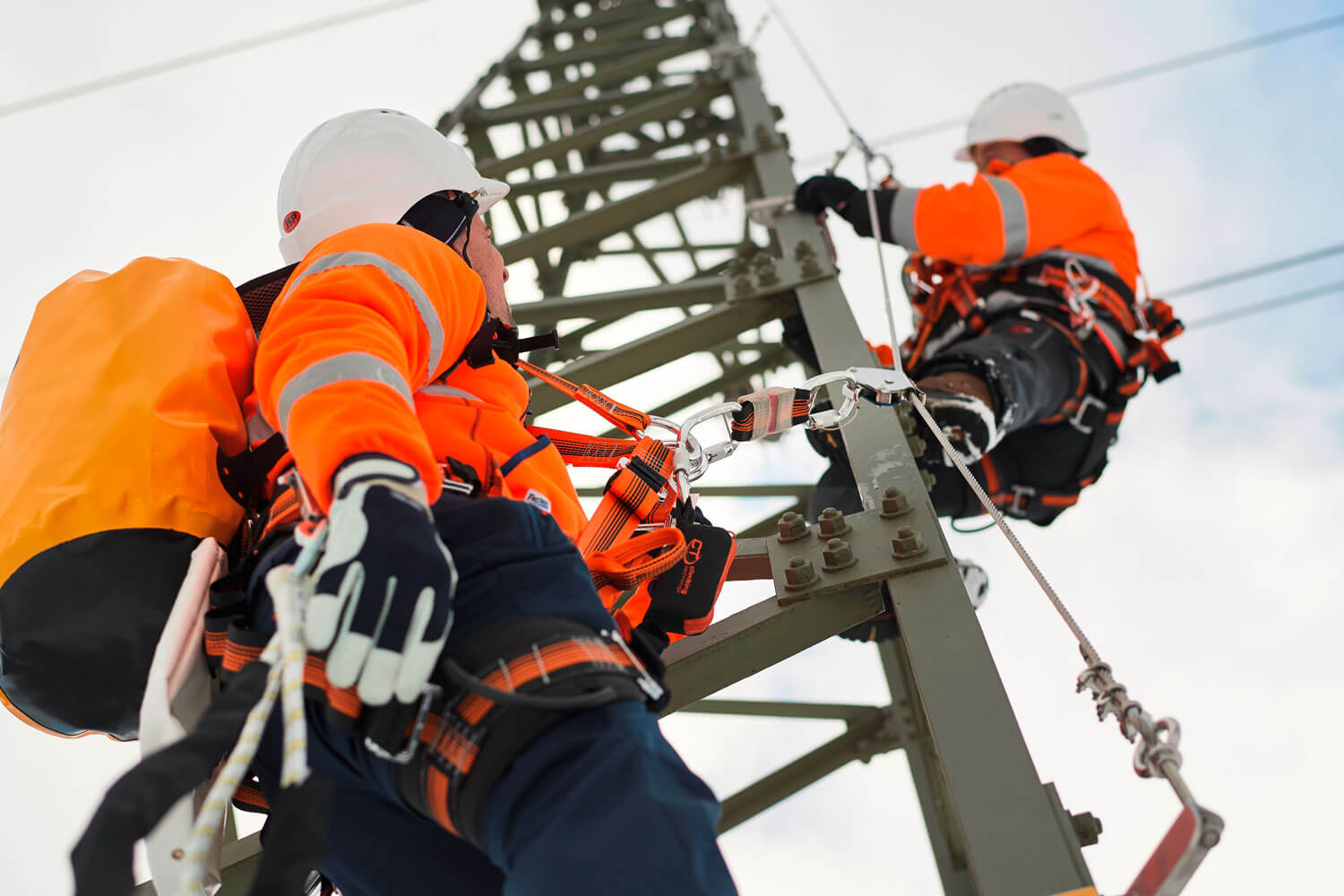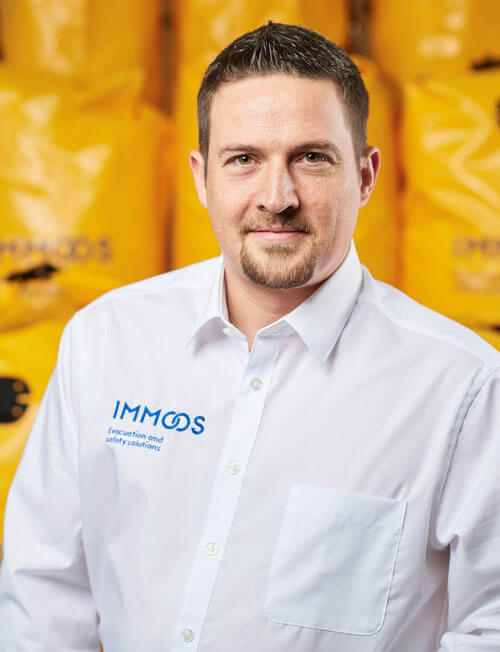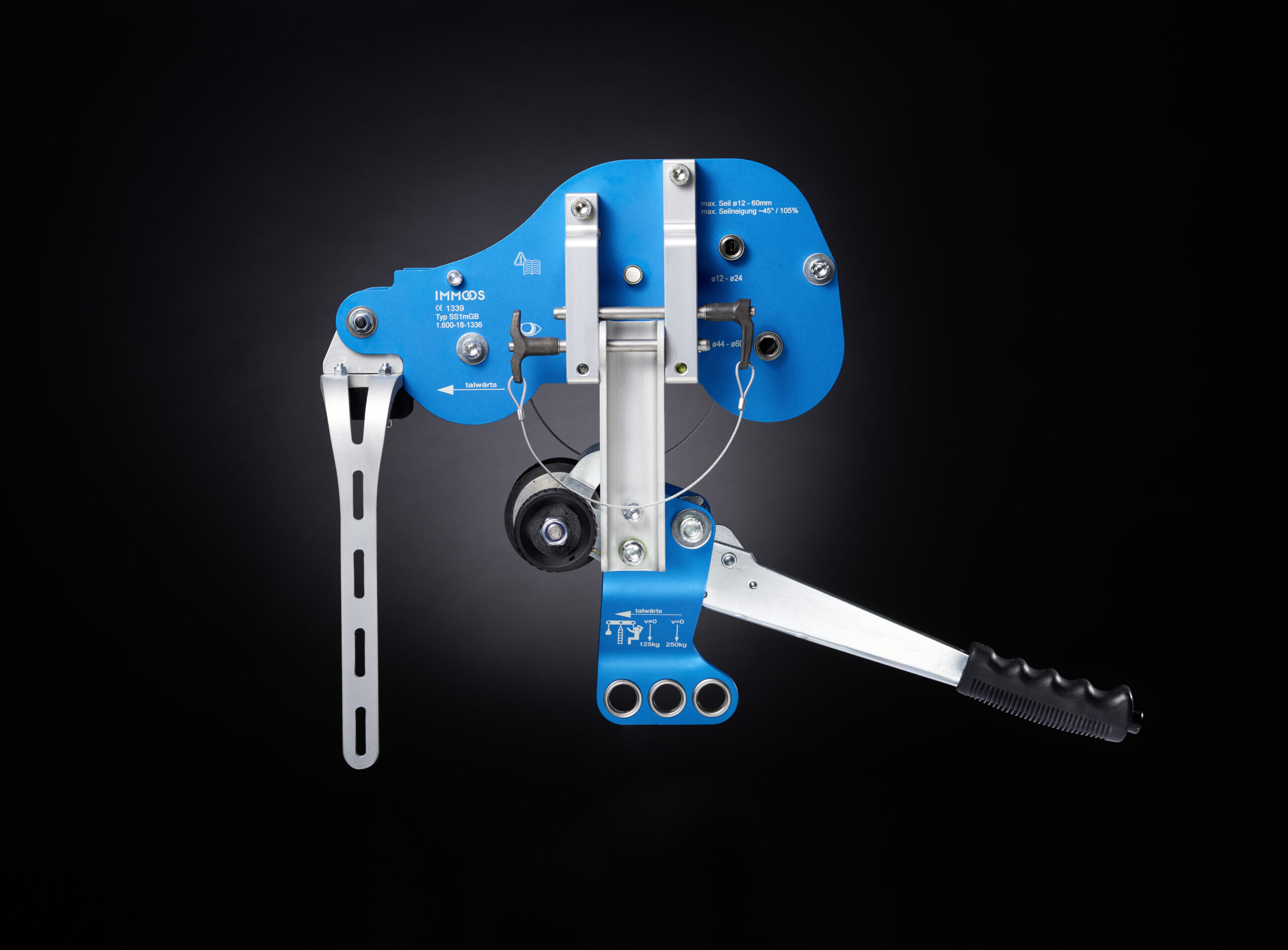
Cities, SI Urban 1/2020
RESCUE CONCEPT

Use of special equipment
As the spans of urban cable cars are often very large and the cable spans are very flat, special equipment is required for rescues. In the city, rescuers are helped neither by gravity – as in the mountains – nor by the distance between the support and the gondola.
To get to the gondola quickly, rescue squads here must move themselves along by winch or cable rescue carriage. “Our SS1 self-driven cable rescue carriage is particularly suited to this case. With the motorised equipment, the rescuer can get to the gondola independently and without assistance from a second rescuer,” the rescue expert reports.
Even gradients up to 20° or 36%, such as often occur on urban cable cars, are no problem. With special additional equipment, the rescuer can then gradually pick up passengers.
Dealing with passangers
The bolder passengers – generally the younger people – are evacuated first, in order to gain the confidence of the passengers who are afraid, and the others are then evacuated one by one.
“The passive rescue system is used both in cities and on mountains – at no point do passengers intervene in their evacuation; only the rescuer does that,” Immoos emphasises. Florian Immoos
The rescue concept
What exactly the rescuer has to do is defined in a rescue concept. “Initially, the operator of an urban cable car may be unaware that a rescue plan is a legal requirement and generally provided by the cable car manufacturer in an all-inclusive package,” Immoos explains.
The manufacturer has often obtained the concept from his company. “We receive a longitudinal profile of the cable car with details of the surroundings, on the basis of which we produce a rough flowchart with timings. Here, we comply with the European standards, which are recognised worldwide,” the Managing Director says.
According to these, the evacuation of a cable car must take a maximum of only 210 minutes – less 30 minutes’ response time. The type and number of rescuers and the equipment are then determined on the basis of the time calculation.
“We assemble an individual equipment bag for each rescue sector here, which contains not only equipment and gear but also detailed instructions,” Immoos says.

The training
However, in no way are these instructions a substitute for the training. Indeed, on initial delivery of certified IMMOOS products, training is mandatory. “We offer one-week coursesinGerman,FrenchorEnglish. If necessary, a translator is also used,” the rescue expert says.
The most useful is squad training, in which six rescuers receive personal and intensive training and they in turn train their own personnel. Subsequently, rescue must be practised with passengers at least once a year, some parts more frequently.
However, as urban cable cars run for almost 365 days per year, large exercises can actually generally take place only at night or during maintenance times.
“Nonetheless, staff can also rehearse grips and movement sequences whilst the cable car is in operation. Some cable car operators might hang a practice gondola in the garage or get the team to practise handling with various equipment in the station,” Immoos out- lines some practical examples.
In Madeira, the cable car operators have even created an external training ground. The experience gained there is gradually flowing into the rescue plan. Photos: IMMOOS







